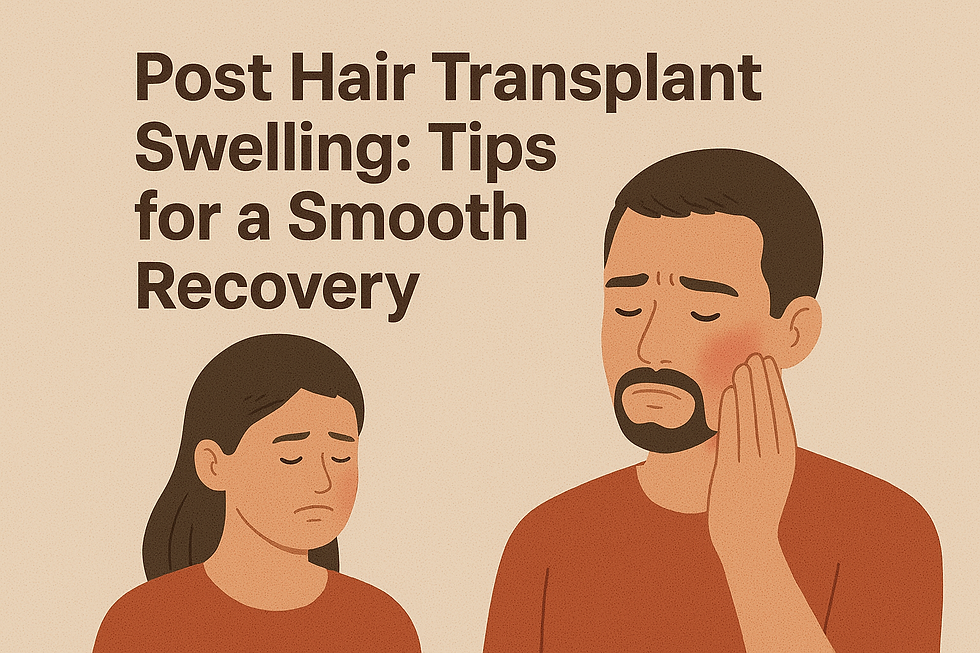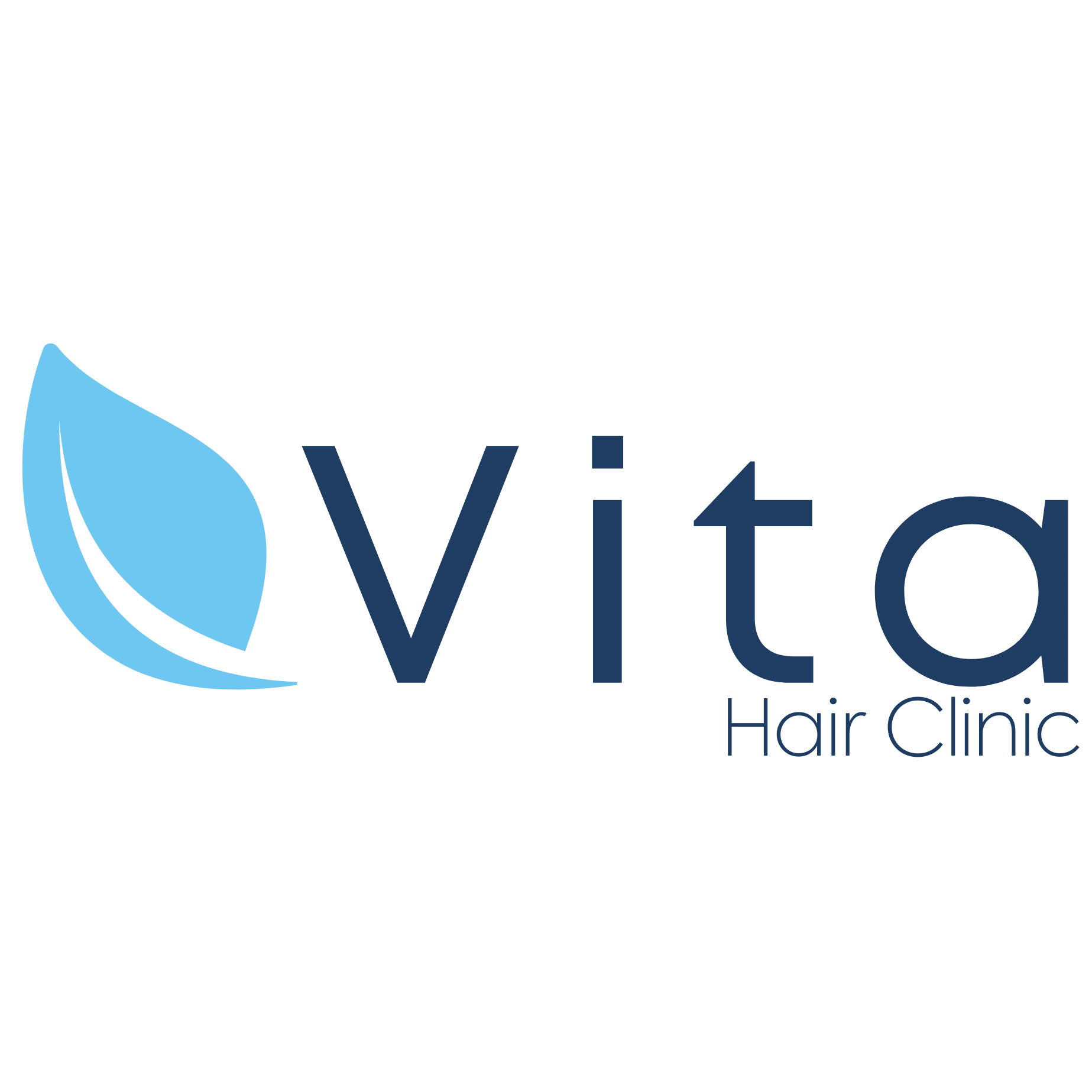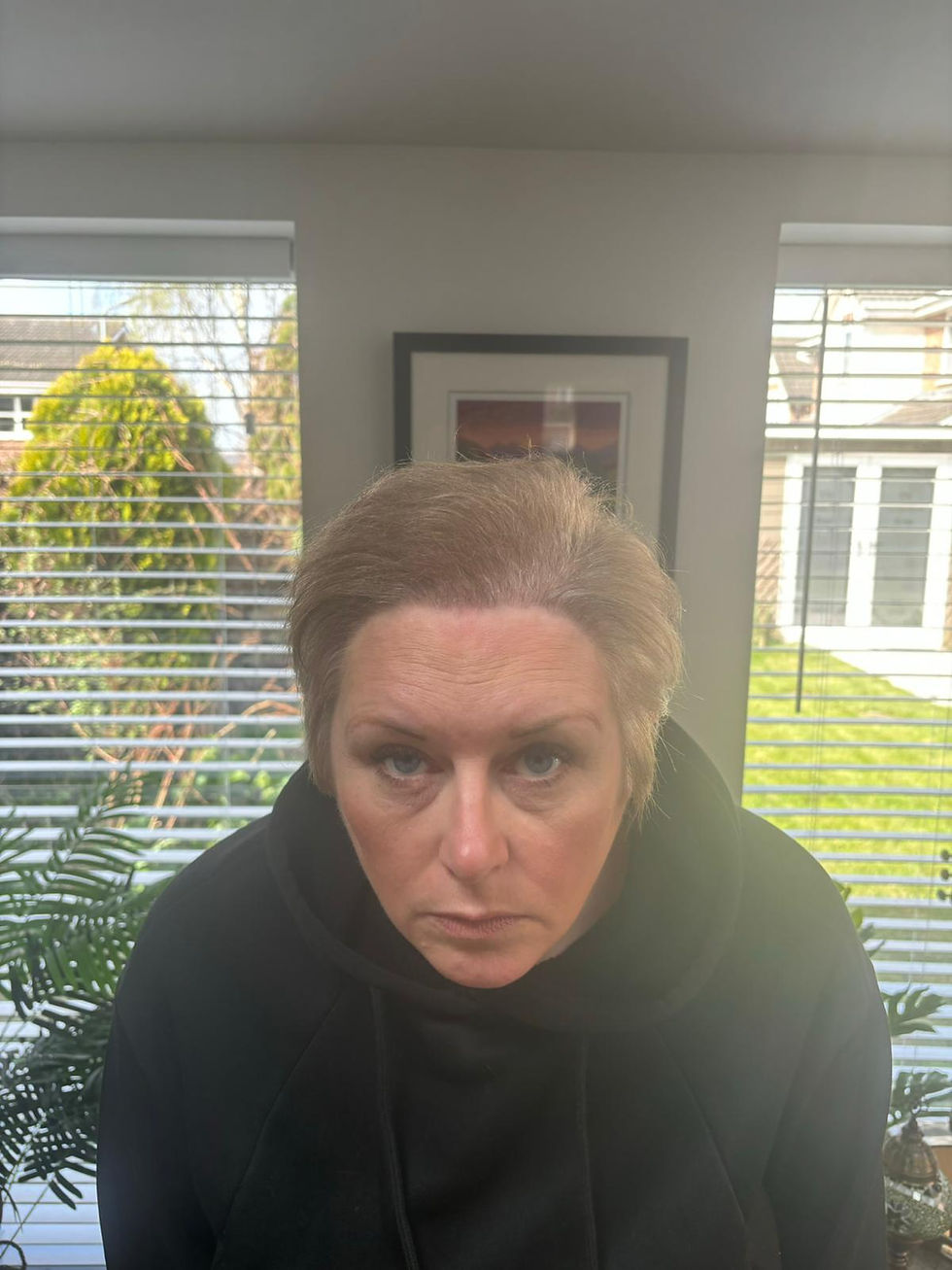Post Hair Transplant Swelling: Tips for a Smooth Recovery
- Vita Hair Clinic

- Sep 10
- 5 min read

Swelling after a hair transplant is a common reaction your body has to the minor trauma caused during the procedure. When you undergo a hairline transplant or any hair transplant surgery, tiny incisions and fluid injections trigger your body's natural inflammatory response.
This leads to post hair transplant swelling, often visible as puffiness around the forehead, eyelids, and cheeks—a condition sometimes referred to as a hair transplant swollen face.
You might wonder how likely it is for swelling to occur.
The truth is, most patients experience some degree of swelling after the procedure. It typically starts between 2 to 6 days post-surgery and usually subsides within a few days after that.
Understanding this side effect helps set realistic expectations and prepares you mentally for the healing process. Knowing what’s normal allows you to focus on proper care without undue worry, ensuring your recovery stays on track and your new hairline transplant results look their best.
However, it's essential to be aware that hair transplant side effects can extend beyond just swelling. With the right knowledge and support, these challenges can be overcome with strength and determination.
For those considering this procedure, understanding the Norwood Hair Loss Scale can provide valuable insights into stages of male pattern baldness and help in making informed decisions about hair restoration options.
If you're looking into advanced procedures like DHI, exploring DHI hair transplant in Turkey could be beneficial. The recovery phase post-surgery is crucial; hence, following expert advice on hair transplant recovery and aftercare will ensure optimal healing and results.
Managing Post Hair Transplant Swelling: Practical Tips
Taking the right steps after your procedure can make a significant difference in how quickly you reduce hair transplant swelling and ensure a comfortable recovery.
Here are some key strategies to consider as part of your post hair transplant care:
1. Elevate your head while sleeping
Keeping your head raised on extra pillows or using a recliner helps prevent fluid from accumulating in the scalp and forehead. This position encourages natural drainage and reduces puffiness.
2. Apply cold compresses or ice packs
Gently placing a cold pack on swollen areas for 10–15 minutes at a time can soothe inflammation. Be careful not to apply ice directly to the skin—wrap it in a soft cloth to avoid frostbite or irritation. Use this method intermittently during the first 48 hours after surgery.
3. Follow medication instructions carefully
If your doctor prescribes steroids or anti-inflammatory medications, take them exactly as directed. Steroids are particularly effective at minimizing swelling by calming the body's inflammatory response triggered by surgery.
These practical tips support your body’s healing process and help keep swelling under control without causing discomfort. Consistency with these measures enhances their effectiveness and contributes to a smoother recovery experience.
It's also important to note that hair transplant success rates can be significantly influenced by proper post-operative care, including managing swelling effectively.
For personalized advice and expert care, consider consulting with renowned specialists like Dr. Kinya's Düsunmez, who is known for his expertise in hair transplant procedures.
Additionally, if you're considering options like an unshaven hair transplant, understanding how to manage post-surgery care will be crucial for achieving the best results.
Additional Strategies for a Smoother Recovery
Taking care of yourself after your hair transplant goes beyond just managing swelling. Paying attention to your overall health plays a key role in how quickly and comfortably you heal.
Hydration and Nutrition
Your body needs plenty of water to flush out toxins and keep tissues healthy. Drinking enough fluids supports circulation, which helps reduce swelling naturally. Alongside hydration, focus on eating nutrient-rich foods like fruits, vegetables, lean proteins, and whole grains. These provide essential vitamins and minerals that promote skin repair and reduce inflammation.
Activity Levels
Avoid pushing yourself too hard physically during the first week or so after your procedure. Strenuous exercise or heavy lifting can increase blood pressure and promote more swelling in the scalp and surrounding areas. Gentle movement like short walks is fine, but listen closely to your body’s signals. Rest is an important part of hair transplant aftercare that shouldn’t be underestimated.
Using a Soft Headband
A simple yet effective technique involves wearing a soft headband around your forehead. This gentle pressure can help prevent fluid from pooling around your eyes and cheeks, areas commonly affected by post-transplant swelling. Make sure the headband is snug but not tight enough to cause discomfort or interfere with blood flow.
Incorporating these strategies into your daily routine supports your healing process in ways that complement medical treatments and other practical tips you’ve already considered.
When to Reach Out to Your Doctor
Swelling after a hair transplant is common, but certain signs suggest you should seek medical advice to rule out post hair transplant complications.
It's important to contact your healthcare provider if you notice:
Swelling that worsens instead of improving after several days
Swelling accompanied by severe pain or tenderness
Redness, warmth, or pus around the transplanted area indicating possible infection
Fever or flu-like symptoms alongside swelling
Difficulty opening your eyes due to excessive swelling
Prompt communication with your doctor can ensure any issues are addressed early, keeping your recovery on track and safe. Trusting your instincts about unusual changes is key in preventing more serious problems.
Final Thoughts on Post Hair Transplant Swelling
Experiencing swelling after a hair transplant is a common and natural part of your body’s healing response. This temporary side effect may feel uncomfortable or concerning, but remember that it typically resolves within days.
Taking the right steps can make a significant difference in your comfort and promote a smooth recovery after hair transplant:
Follow your surgeon’s aftercare instructions carefully
Use recommended methods like head elevation and cold compresses
Stay hydrated and avoid activities that increase swelling
Your patience and proper care help ensure the best possible outcome while minimizing
swelling’s impact on your daily life.
It's also important to note that transplanted hairs may fall after a hair transplant, which is a normal part of the process. Understanding this can further ease any concerns during your recovery period.
FAQs (Frequently Asked Questions)
What causes swelling after a hair transplant and how common is it?
Swelling after a hair transplant occurs due to the body's natural inflammatory response to the surgical procedure. It is a common side effect experienced by many patients as the tissues around the transplant site react to the trauma of surgery.
When does swelling typically start after a hairline transplant and how long does it last?
Swelling usually begins within 2 to 3 days post-procedure and can last for up to a week. The intensity and duration vary depending on individual healing rates and the extent of the transplant.
Why is understanding post hair transplant swelling important for patients?
Understanding this side effect helps patients set realistic expectations, adhere to proper care instructions, and recognize normal versus abnormal healing signs, ensuring a smoother recovery process.
What are effective ways to reduce hair transplant swelling during recovery?
To reduce swelling, patients should elevate their head while sleeping to minimize fluid buildup, apply cold compresses or ice packs to swollen areas, and take prescribed medications such as steroids as directed by their doctor.
Are there additional strategies that support a smooth recovery after hair transplant surgery?
Yes. Drinking plenty of water, eating nutritious foods, avoiding strenuous activities that could worsen swelling, and wearing a soft headband can all help minimize fluid accumulation and promote healing.
When should I contact my doctor regarding swelling after my hair transplant?
If the swelling appears excessive, worsens unexpectedly, or fails to improve over time, it is important to reach out to your healthcare provider promptly to rule out complications and receive appropriate care.













.png)
Comments